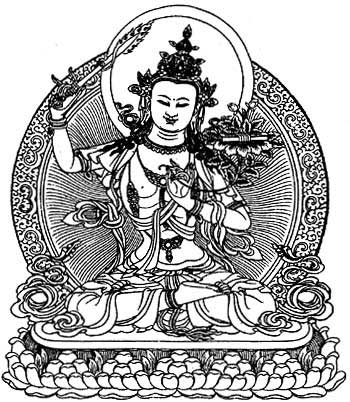My most dear, most precious, most kind, most wish-fulfilling one,
Thank you very much for your kind letter. I am very, very, very happy. Usually people explain their problems and they don’t say that it comes their mind, their past karma, they never say that. Most people don’t say that, so I am very, very happy to hear that you recognize that. It's so good. That means you have to purify the negative karma and you have to stop creating the negative karma again. Therefore, you need to do meditation on renunciation, bodhicitta and emptiness.
Not only that, of course to realize renunciation of your own samsara, then you need to have compassion for other sentient beings—the numberless sentient beings who are suffering in the oceans of samsara—and from that to develop bodhicitta and then also to realize emptiness, the very, very heart of the entire Buddhist path, that practice, that realization.
So the graduated path to enlightenment, the lamrim, when you read that, it's like touching all the teachings of Buddha, the Lesser Vehicle teachings, the Greater Vehicle sutra teachings and the Greater Vehicle tantra teachings. Lamrim is the basis for tantric teachings, so it is the most, most, most important practice.
For you it came out to meditate and to study the lamrim. There are many lamrims by different enlightened beings, but for you Lama Tsongkhapa's lamrim came out—either the Great Lamrim (Lamrim Chenmo) or the Middle-Length Lamrim. So from these two you can choose. If you study the Middle-Length Lamrim you will understand the Great Lamrim (Lamrim Chenmo).
The only thing that is taken out is negation of the different wrong views, in the section of emptiness. The teachings on emptiness are longer in the Lamrim Chenmo, as the negation of the different wrong views with logic is taken out of the Middle-Length Lamrim. If you want to know that, then you can study from the Lamrim Chenmo. It depends on whichever text you want. You can choose. The Middle-Length Lamrim is like having studied the Lamrim Chenmo as well.
So that’s incredibly good, after reading many lamrim texts and then you read Lama Tsongkhapa's lamrim it is very tasty. The words are profound and deep. You will think, “I should have read this many years ago. So many years ago I should have read this.” So it is very, very good to read, to study from beginning to end. Read it mindfully so it becomes a meditation that plants the seeds of enlightenment, so that means enlightenment. This is very, very important.
Read it four times from beginning to end. Each time you will find different points and something which you didn't learn before comes out. There is a story that if you read it nine times you get that benefit nine times.
In regard to the lamrim meditations, do effortful meditation, which means to go over the lamrim outlines during those months, over and over, and what is explained there and in other commentaries, what you remember, you can meditate like that.
The way to meditate, generally people think there is only fixed meditation, one-pointed meditation, but there are two types—analytical meditation and fixed meditation. All the meditations on the lamrim are analytical meditations, except shamatha or mental quintessence. Then after that there is effortless practice.
If you feel a connection with Manjushri that is extremely good, in order to develop your wisdom. It is so important to develop your wisdom, so you need Manjushri to clear away dullness or ignorance and to develop wisdom. I am going to translate a Manjushri meditation for you, but it will come later, as it needs to be translated.
However, you should read Chanting the Names of Manjushri every day. Even if you don’t understand it, it leaves positive imprints. It’s so good, so incredible, incredible, incredible. When you understand the benefits, you won't believe it. This practice especially helps you to develop wisdom and understand Buddhadharma.
Also it’s good if you read Praise to Manjushri (Tib: gang lo ma) every day, and recite Manjushri mantra. [You can find links to these prayers and practices in the FPMT Catalogue.]
Regarding recitation of Chanting the Names of Manjushri, and also Praise to Manjushri and Manjushri mantra, recite these mindfully so that it becomes the cause for the path to enlightenment. Recite with the motivation to benefit the numberless six realm beings—the hell beings, the hungry ghosts, the animals, the humans, the suras, the asuras and the intermediate state beings—so not only the beings in this world, but there are numberless universes, so there are all these different beings.
Please recite these prayers and mantras and also study and practice for everyone, so no one is left out. It's for everyone. Recite in order to achieve enlightenment, but not only your own enlightenment; it is also for them to achieve enlightenment, so then you need to attain enlightenment. Your motivation includes that—it includes every ant, every mosquito, every dog, every insect, wherever you go, whichever country, mountain, like that.
So please practice in this way.
With much love and prayers ...































